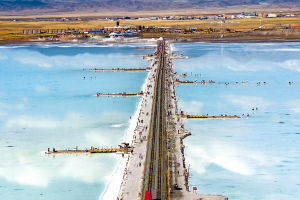The Himalayas, the tallest mountain range on our planet, bear witness to the dynamic geological processes that have shaped our world.
Stretching for 2,450 kilometers and spanning 200-500 kilometers in width, this majestic range boasts numerous peaks towering over 8,000 meters in height. Its formation can be attributed to the collision and extrusion of the Indian Ocean plate with the Asian and European continental plates.
According to the theory of continental drift, the Earth's crust is divided into several plates that constantly shift and interact with each other. Where these plates meet, they either collide, causing compression and uplift, or move apart, leading to separation. The Himalayas bear the evidence of such geological movements.
Geological studies indicate that around 2 billion years ago, the region now occupied by the Himalayas was once an ocean, known as the ancient Mediterranean Sea.
Approximately 70 million years ago, a sudden surge in geological activity transformed the Earth's landscape, giving rise to numerous mountains. Among them, the Himalayas emerged as a result of the collision between the Indian Ocean plate and the Asian and European continental plates, leading to their convergence and subsequent uplift.
Exploring the geological layers of Mount Everest's North Col provides valuable insights. Researchers have discovered that the rock in this layer exhibits a high stretching rate and dates back to approximately 13 million years ago.
This suggests that Mount Everest reached a staggering height of 12,000 meters during that time, which was considered the theoretical limit for mountain height on Earth. Over time, however, the force of gravity caused the rock to fracture and reduced the mountain's height.
Yet, the collision and compression between the Indian Ocean plate and the Asian and European continental plates persist. The Indian Ocean plate continues to move northward at a rate of 5 centimeters per year, while the Himalayan region steadily rises at approximately 1 centimeter per year.
The ongoing geological processes in the Himalayas are a testament to the Earth's ever-changing nature. As the collision and compression persist, new mountains continue to form, and the Himalayas continue their gradual ascent. The forces that shape these towering peaks are a reminder of the immense power and intricacy of our planet's geological mechanisms.
The Himalayas not only offer awe-inspiring beauty but also serve as a living laboratory for scientists to study the Earth's geological processes. They provide a unique opportunity to delve into the history of our planet and gain a deeper understanding of its ever-evolving nature.
As we marvel at the grandeur of the Himalayas, we are reminded of the profound forces that have shaped our world over millions of years. These majestic mountains stand as a testament to the ongoing dynamism of our planet, an eternal reminder of Earth's ceaseless transformation.
The Himalayas captivate our imagination with their snow-capped peaks, breathtaking landscapes, and rich cultural heritage. Beyond their geological significance, they are a haven for biodiversity, hosting diverse ecosystems and rare species.
Exploring the Himalayas unlocks a world of discovery, offering a profound connection with nature and a humbling perspective on our place in the grand tapestry of Earth's history.


